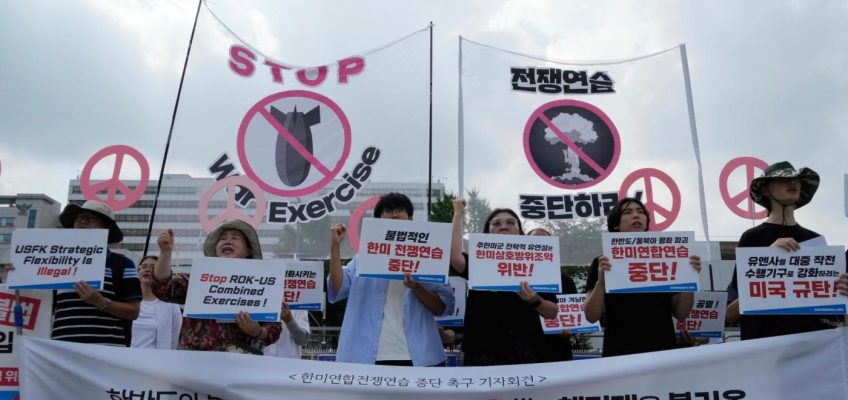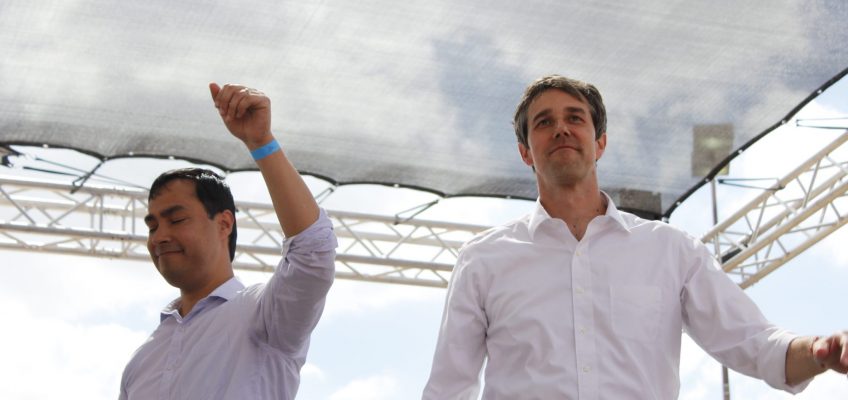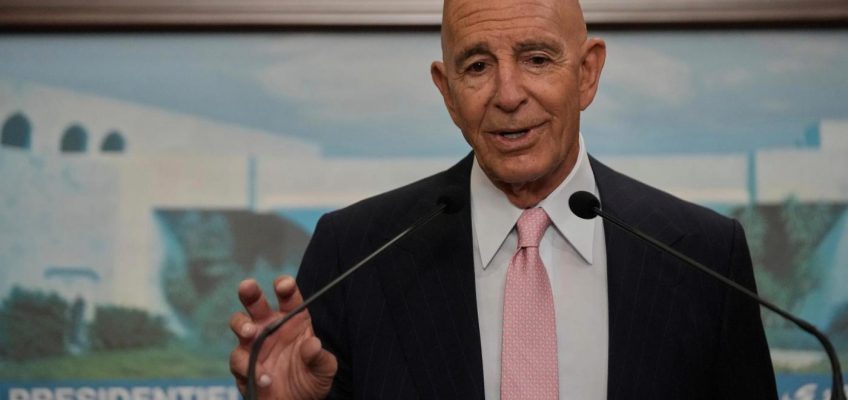By KIM TONG-HYUNG
SEOUL, South Korea (AP) — South Korea and the United States began their annual large-scale joint military exercise on Monday to better cope with threats by nuclear-armed North Korea, which has warned the drills would deepen regional tensions and vowed to respond to “any provocation” against its territory.
Related Articles
Google to pay $36M fine for anticompetitive deals with Australia’s largest telcos
Cambridge Dictionary adds ‘skibidi’ and ‘tradwife’ among 6,000 new words
Swiss watchmaker Swatch apologies for ad showing gesture seen as racist
Hamas cites progress in ceasefire talks as Palestinian death toll passes 62,000
Zelenskyy brings Europe’s top leaders with him to meet Trump on ending Russia’s war
The 11-day Ulchi Freedom Shield, the second of two large-scale exercises held annually in South Korea, after another set in March, will involve 21,000 soldiers, including 18,000 South Koreans, in computer-simulated command post operations and field training.
The drills, which the allies describe as defensive, could trigger a response from North Korea, which has long portrayed the allies’ exercises as invasion rehearsals and has often used them as a pretext for military demonstrations and weapons tests aimed at advancing its nuclear program.
In a statement last week, North Korean Defense Minister No Kwang Chol said the drills show the allies’ stance of “military confrontation” with the North and declared that its forces would be ready to counteract “any provocation going beyond the boundary line.”
Ulchi Freedom Shield comes at a pivotal moment for South Korea’s new liberal President Lee Jae Myung, who is preparing for an Aug. 25 summit with U.S. President Donald Trump in Washington. Trump has raised concerns in Seoul that he may shake up the decades-old alliance by demanding higher payments for the American troop presence in South Korea and possibly reducing it as Washington shifts its focus more toward China.
South Korean protesters stage a rally to oppose the joint military exercises, Ulchi Freedom Shield or UFS, between the U.S. and South Korea in front of the presidential office in Seoul, South Korea, Monday, Aug. 18, 2025. The banners read “Stop the military exercise between the U.S. and South Korea.” (AP Photo/Ahn Young-joon)
Tensions on the Korean Peninsula remain high as North Korea has brushed aside Lee’s calls to resume diplomacy with its war-divided rival, with relations having soured in recent years as North Korean leader Kim Jong Un accelerated his weapons program and deepened alignment with Moscow following Russia’s invasion of Ukraine.
“What’s needed now is the courage to steadily take steps toward easing tensions, grounded in a firmly maintained state of ironclad security readiness,” Lee said during a Cabinet meeting on Monday. South Korea also on Monday began a four-day civil defense drill involving thousands of public workers, often scheduled alongside the allies’ summertime military exercises.
Seoul’s previous conservative government responded to North Korean threats by expanding military exercises with the United States and seeking stronger U.S. assurances for nuclear deterrence, drawing an angry reaction from Kim, who last year renounced long-term reconciliation goals and rewrote the North’s constitution to label the South a permanent enemy.
In his latest message to Pyongyang on Friday, Lee, who took office in June, said he would seek to restore a 2018-inter-Korean military agreement designed to reduce border tensions and called for North Korea to respond to the South’s efforts to rebuild trust and revive talks.
The 2018 military agreement, reached during a brief period of diplomacy between the Koreas, created buffer zones on land and sea and no-fly zones above the border to prevent clashes.
But South Korea suspended the deal in 2024, citing tensions over North Korea’s launches of trash-laden balloons toward the South, and moved to resume frontline military activities and propaganda campaigns. The step came after North Korea had already declared it would no longer abide by the agreement.
When asked whether the Lee government’s steps to restore the agreement would affect the allies’ drills, the South’s Defense Ministry said Monday that there are no immediate plans to suspend live-fire training near the Koreas’ disputed western maritime border.
South Korean protesters stage a rally to oppose the joint military exercises, Ulchi Freedom Shield or UFS, between the U.S. and South Korea in front of the presidential office in Seoul, South Korea, Monday, Aug. 18, 2025. The banners read “Stop the military exercise between the U.S. and South Korea.” (AP Photo/Ahn Young-joon)
While the allies have postponed half of Ulchi Freedom Shield’s originally planned 44 field training programs to September, U.S. military officials denied South Korean media speculation that the scaled-back drills were meant to make room for diplomacy with the North, citing heat concerns and flood damage to some training fields.
Dating back to his first term, Trump has regularly called for South Korea to pay more for the 28,500 American troops stationed on its soil. Public comments by senior Trump administration officials, including Undersecretary of Defense Elbridge Colby, have suggested a push to restructure the alliance, which some experts say could potentially affect the size and role of U.S. forces in South Korea.
Under this approach, South Korea would take a greater role in countering North Korean threats while U.S. forces focus more on China, possibly leaving Seoul to face reduced benefits but increased costs and risks, experts say.
In a recent meeting with reporters, Gen. Xavier Brunson, commander of U.S. Forces Korea, stressed the need to “modernize” the alliance to address the evolving security environment, including North Korea’s nuclear ambitions, its deepening alignment with Russia, and what he called Chinese threats to a “free and open Indo-Pacific.”




